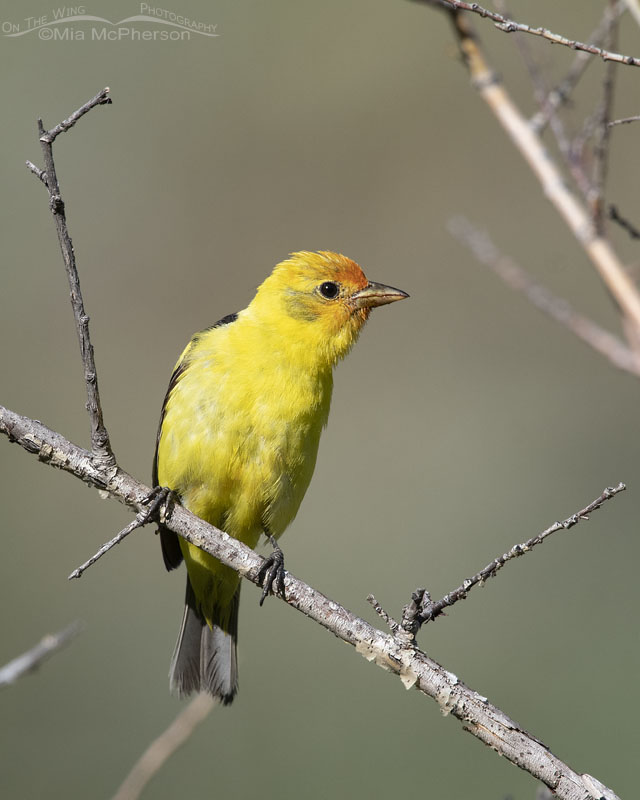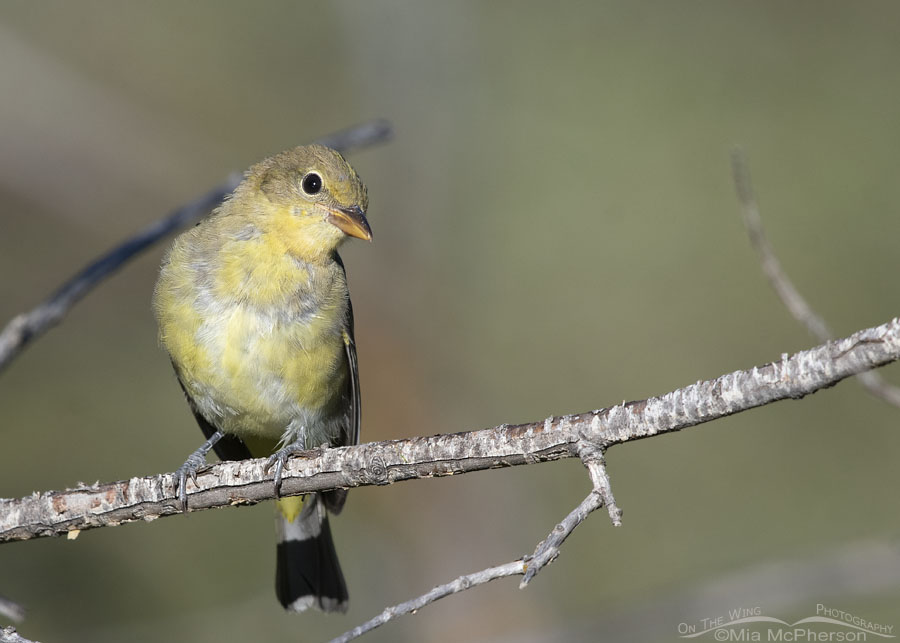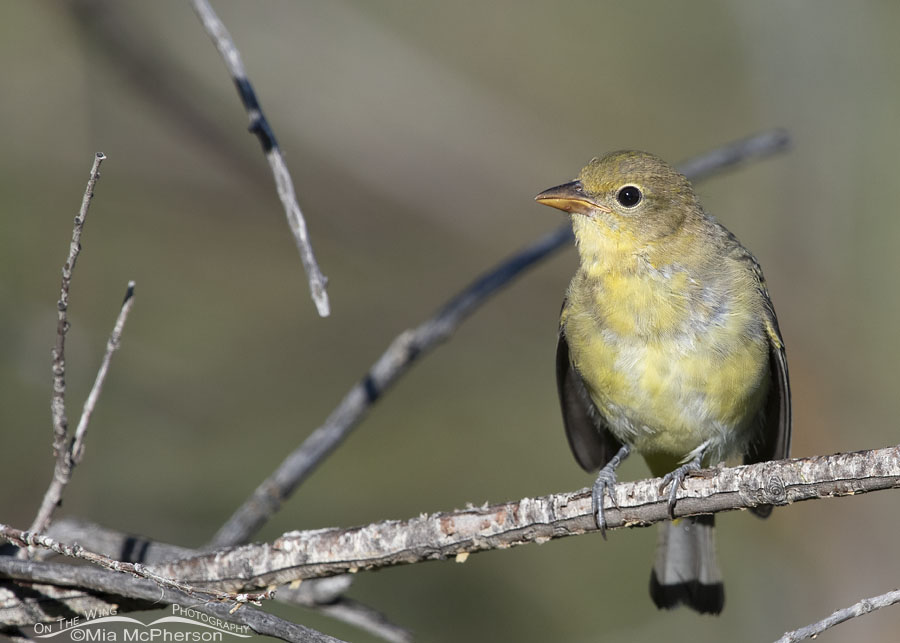
Adult male Western Tanager in the Wasatch Mountains – Nikon D500, f7.1, 1/1600, ISO 500, -0.3 EV, Nikkor 500mm VR with 1.4x TC, natural light
Last week a flash of yellow caught my eyes and when I moved my lens to look at the bird I spotted a male Western Tanager perched on a branch in a nearby tree. I don’t get to photograph Western Tanagers all that often so I was excited to see him out in the open.
I wish that the out of focus twig wasn’t there at the tip of his tail and although I could remove it in post processing I don’t like doing that so I left it.

Immature Western Tanager tilting its head – Nikon D500, f7.1, 1/1600, ISO 500, -0.3 EV, Nikkor 500mm VR with 1.4x TC, natural light
My peripheral vision caught more movement nearby so I moved my lens to see what it might be and I knew immediately that I was looking at an immature Western Tanager. As I photographed this young tanager I was able to see it flutter its wings and beg for food from the nearby male who had moved to a spot where I could barely see him. I am sure this young tanager knew precisely where he was though.
I’ve learned over the years to pay attention to what is going on beyond my viewfinder. Not that long ago I was able to take photos of a stunning Townsend’s Solitaire fledgling because I’ve learned that lesson well.

Begging immature Western Tanager – Nikon D500, f7.1, 1/1600, ISO 500, -0.3 EV, Nikkor 500mm VR with 1.4x TC, natural light
Now, some people might wonder how I immediately knew that I was viewing at a young Western Tanager and not an adult female. The young tanagers and the females do look similar.

Begging immature Western Tanager with inset
The first clue, and really the only one I needed, was that I could see the young tanager’s fleshy gape through my viewfinder.
Many, but not all, young birds have a pronounced fleshy gape and young Western Tanagers do show the gape. The gape is a fleshy area at the base of the bill where the upper and lower mandibles meet. In some bird species the gape in young birds is brightly colored, it isn’t with this species but it is still noticeable to a trained eye.
The patchy yellow feathers on the chest of this young bird and its begging behavior were also clues that it wasn’t an adult.

Male Western Tanager perched in willows – Nikon D500, f7.1, 1/2000, ISO 500, -0.3 EV, Nikkor 500mm VR with 1.4x TC, natural light
The immature Western Tanager took flight and I couldn’t see where it went but I was able to find the male again and since he was mostly out in the open I took a few more photos of him before he too flew away.
It was fun to have the male and immature Western Tanager in my viewfinder for a few moments high in the Wasatch Mountains last week. I hope I see more soon.
Life is good. Stay safe.
Mia
Click here to see more of my Western Tanager photos plus facts and information about this species.


Wonderful series of detailed shots; underscored by your very interesting commentary about the Tanager’s gape. Thanks Mia.
i saw something in my travels to the mountains and asked others and a suggestion was an immature western tanager. Seeing this confirms it. Great shots, Mia.
They are so inquisitive looking. Wonderful photos.
Thank you so much for the knowledge and persistence you bring to each and every post.
Posts which delight, excite, and educate me each and every day.
Another excellently photographed and educational post!
Thanks so much for the explanation on determining the age.
Great photos Mis
Beautiful shots! The out of focus twig doesn’t bother me, we get what we get when photographing wildlife. I love the fact that you left it in showing the true image. A photographer after my own heart! Stay safe!